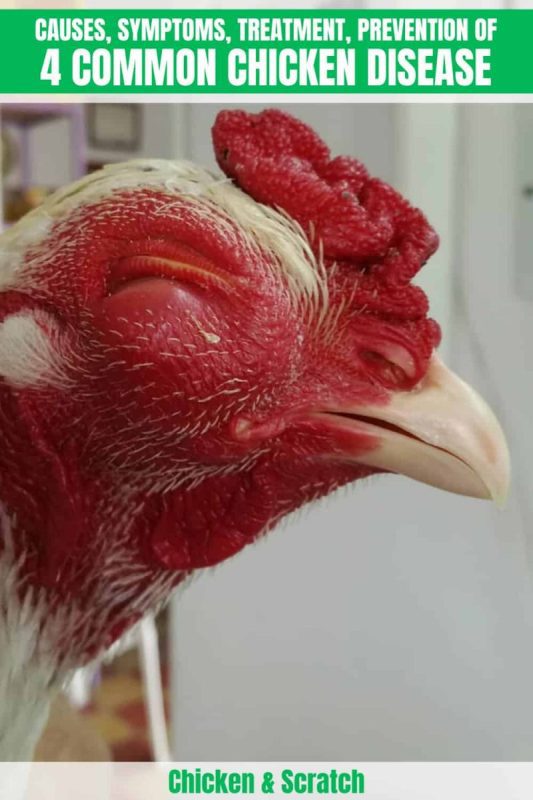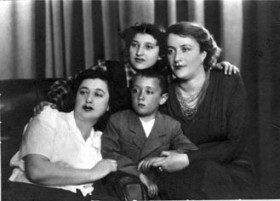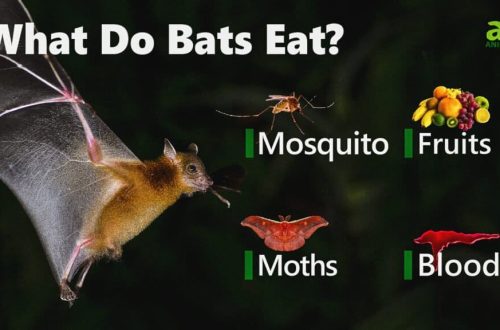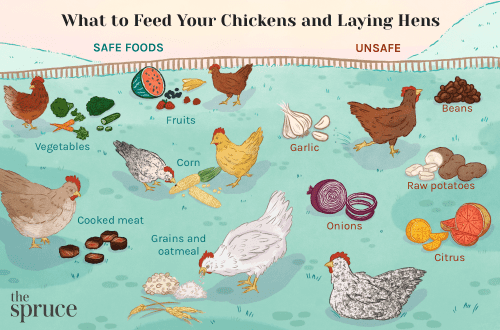
Broiler diseases: a description of their diseases, symptoms and methods of treatment
It is believed that broilers are a breed grown for meat. Is it really? Let’s start with the fact that broilers are a specially bred hybrid line. It was obtained during crossing, using several individuals of the meat breed. Without human intervention, such a breed will not exist. The fact is that these individuals have a set of artificial traits that are not preserved in subsequent offspring. For this reason, each successive generation needs an infusion of undiluted tribal blood.
It should be noted that today there are other types of pets. These include:
- broiler goose;
- Empress;
- broiler duck.
Modern science is moving forward, so today it is possible to increase the body weight of an individual up to fifty times for a period of one and a half months. Veterinarians and geneticists have come up with a progressive way of fattening, as well as keeping a broiler chicken. Surprisingly, the nutrition received in the form of two kilograms of feed allows you to gain weight up to one kilogram. No animal is able to surprise with such rapid growth. That is why the breeding of this breed is so popular among modern farmers.
Contents
Chicken diseases
Any hybrid precocious species is very tender and whimsical. Their early age is especially important, so they need special responsibility and care. Research and observation brought out the most dangerous periods. These include the period from the first to the fifth day, from the twenty-fourth to the twenty-fifth. And also from the thirty-fifth to the fortieth day. During these periods, broilers show an increased sensitivity of the digestive tract. Broiler chicken diseases: enteritis, cuticulitis, gastritis.
Also, often the chicken falls ill with respiratory diseases. Diseases of broiler chickens can be as follows: sinusitis, bronchitis, pneumonia. Quite often, broilers are also worried about diseases of the joints. In order for the treatment to be successful, it is important to identify the disease as early as possible. To correctly and quickly diagnose the disease, you need to know its signs.
As a rule, almost all broiler diseases appear due to improper care. These are diseases that are non-contagious. Naturally, only man is to blame for these diseases.
Dyspepsia
In a day old chick no developed digestive system. Its gastric secret has low acidity and a small amount of digestive enzymes. Due to nutrition that has been compiled incorrectly, diseases of the digestive tract occur.
In addition to the fact that the cause of dyspepsia is an undeveloped digestive system, feeding any food that has mold, rot, is also very harmful to broilers. If a chicken drinks poor-quality water, it is overfed after a hunger strike, or indigestible foods are introduced into the feed, dyspepsia is also observed. Note that indigestible foods include: rye, barley, fats.
It is extremely undesirable for young animals and a sudden transition from one feed to another, or the introduction of an unusual feed. Unusual feed includes: fresh grass, silage, protein feed.
The cause of dyspepsia can also be malnutrition in chickens of the maternal herd. Improper nutrition leads to a violation of the development of the embryo.
The lack of certain vitamins, minerals, error in care are predisposing factors to the spread of diseases. When these factors act, then the work of digestion begins to be disturbed in birds. In this case, the food simply lingers, rots and poisons the body. Unfortunately, in such cases, death occurs.
As a rule, when a chicken gets sick, its appearance has the following signs: weakness, lethargy. The chick is not eating well, the neck is stretched, and the eyes are closed. The main symptom is diarrhea. It has a yellowish-green, whitish, or brown color. Often diarrhea is accompanied by a foamy mass, there is also an admixture of mucus. Feces contain particles of undigested food. And the cloaca is polluted.
Actions to prevent dyspepsia
- Before the arrival of young individuals, it is necessary to warm up the room to 32 degrees. The bedding material must be warm. In no case should the bellies of the chickens be allowed to cool. If they cool, then the food will not be able to dissolve well, the navel will not heal well.
- Before you plant the chickens, it is necessary that the drinkers have warm and clean water. Ascorbic acid and glucose must be added to this water. It will take about two grams of ascorbic acid, as well as 50 grams of glucose per liter of water. This procedure will not allow microbes to multiply in the intestines. The processes of rotting food will not develop. Such an additive to drinking water stimulates the development of lactic acid bacteria.
- If the broiler is weak, then a special vitamin and mineral complex will help him.
- It is recommended to feed no more than 6 times a day. Feed should be small cereals, which contain a minimum amount of fat and protein. For example, millet, oatmeal, fat-free cottage cheese, yogurt, acidophilus-yeast whey.
- Drinking water has been replaced with special solutions.
- Exclude from the diet of young animals food that contains lime.
supplements
It should be noted that starter feed is perfect for feeding young animals.
BioMos
As a prophylaxis for any infection, you can add BioMos. The action of this drug is that it removes toxins from the body, as well as pathogens. Until the age of two weeks, 1 grams of this drug should be added per 2 kg. Then another 2 weeks you need to add 1 gram per 1 kilogram. Then you can add half a gram.
Bifidum — SHŽ
For the complete restoration of the microflora, as well as after a course of antibiotics, the Bifidum-SHJ preparation is ideal. When serving, there should be a ratio of 5 doses to 200 heads. To do this, dilute the drug in water and add to feed or drinking water.
If the young are reared outdoors, then feeding and watering must be provided for each chick. In particular, this should be remembered when distributing feed with prophylactic drugs. Note that the norm of the front for feeding is 2,5 cm, and for drinking – 1 cm.
Bronchopneumonia
This disease mainly affects young animals that have reached the age of 2-3 weeks. As a rule, the factor causing this disease is hypothermia.
The diseased individual has symptoms as with rhinitis, sinusitis, laryngotracheitis. External indicators: strained breathing, wheezing, constantly open beak, neck stretched forward. A sick chicken has a detached appearance, does not eat well. The patient’s condition is deteriorating. The chicken quickly loses weight, sits at the first opportunity. Feathers look untidy and ruffled.
In individuals, there is a sharp reaction to the lack of oxygen. The absence of normal air can lead to dropsy of the abdominal cavity, hydropericarditis, and pulmonary edema.
In order to prevent broiler disease from occurring, it is necessary follow some recommendations:
- Compliance with microclimate standards. In the first day of the life of a chicken, there should be a fairly high air temperature, about 30 degrees. The oxygen concentration must be at least 17 percent.
- Hygiene. The bedding must not be allowed to be wet and dirty.
- During transportation, hypothermia must not occur.
If, nevertheless, bronchopneumonia has come, you should start treatment immediately. The following drugs help fight against broiler disease:
- Neomycin, synthomycin, erythromycin and r.
- Belcospira oral. It is in powder form and dissolves well in liquid.
- Enroxil. Contains 10 percent enrofloxacin. It should be noted that this drug is a new antibiotic.
- Gentamicin is an easily soluble powder.
- And etc.
Before using these drugs, you should consult with your veterinarian. A doctor knows best how to prevent and treat broiler diseases.
Hypovitaminosis A
This disease can cause lack of retinol. With its deficiency, the correct broiler metabolism may be disturbed. As a rule, a chicken that had a low level of retinol and carotenoids in the yolk during fetal maturation suffers from hypovitaminosis and beriberi.
The first days of the disease, the following symptom is visible: low appetite. Young growth has disheveled feathers, is passive, weak. Further, any diseases of the digestive systems may develop. Sometimes there are diseases of the nervous system. During the period of this disease, a wagging gait, falls on the back are noted. Often sick chickens just walk in one circle.
Characteristic feature – “night blindness”. This means that the twilight vision has relaxed.
In order for this disease not to occur, or for its treatment, food is introduced into the food, which is rich in carrots, herbal flour. Sometimes a mixture is also used.
Hypovitaminosis D
Occurs if there is a failure in the phosphorus-calcium metabolism. In this case, the appearance of rickets is noticed in young animals. As for grown broilers, their bones become soft.
The development of this disease is very slow. This type of hypovitaminosis manifests itself in the form of weakness, lethargy, loss of appetite, bloating, diarrhea, softening and deformation of the bones. The diseased individual first limps. Her limbs tremble, and her head greatly increases in size. If this disease is not treated, the broiler may stop walking.
Sick individuals should be placed in a room that has a large space and good lighting. They need to be walked. As for nutrition, it should be balanced and nutritious. The feed must contain all the necessary vitamins and minerals, there must be the presence of fish oil and a concentrated preparation of calfitserol. As for the dose, it should be doubled compared to the dose for simple prophylaxis.
Hypovitaminosis E
As a rule, the age of broilers that suffer from this disease is three to five weeks. Signs of the disease include: weakness, partial paralysis of the limb. There may be convulsive twitches. In order to prevent this disease, it is necessary to introduce germinated oats and grass flour into the feed.
Group of infectious diseases
Quite often, broilers develop infectious diseases. These include Newcastle disease, bacillary white diarrhea, respiratory mycoplasmosis, etc. Treatment of all infectious, fungal and viral diseases should be carried out under the supervision of a veterinarian.
Disease avoidance
In order to prevent the occurrence of diseases, it is necessary to carry out their prevention. The most effective method of prevention is disinfection. This event should be carried out even in small farms. Disinfection is the cleaning of a room from dirty elements, as well as dust. The maintenance of feeders, drinkers and equipment should be ideal. Periodically, they must be treated with special solutions. The room should be ventilated from time to time, bugged. It is also necessary to whitewash the room.
The next condition is a balanced diet and getting certain drugs. Broilers should receive daily a complex of vitamins, or feed that contains them. In no case should moldy, sour, frozen feeds get into food. Each age needs to choose the appropriate food. And what is suitable for an adult is not to be fed to young animals.
Water quality should be as high as possible and contain additional preparations. Proper care is also important – warmth and cleanliness.





